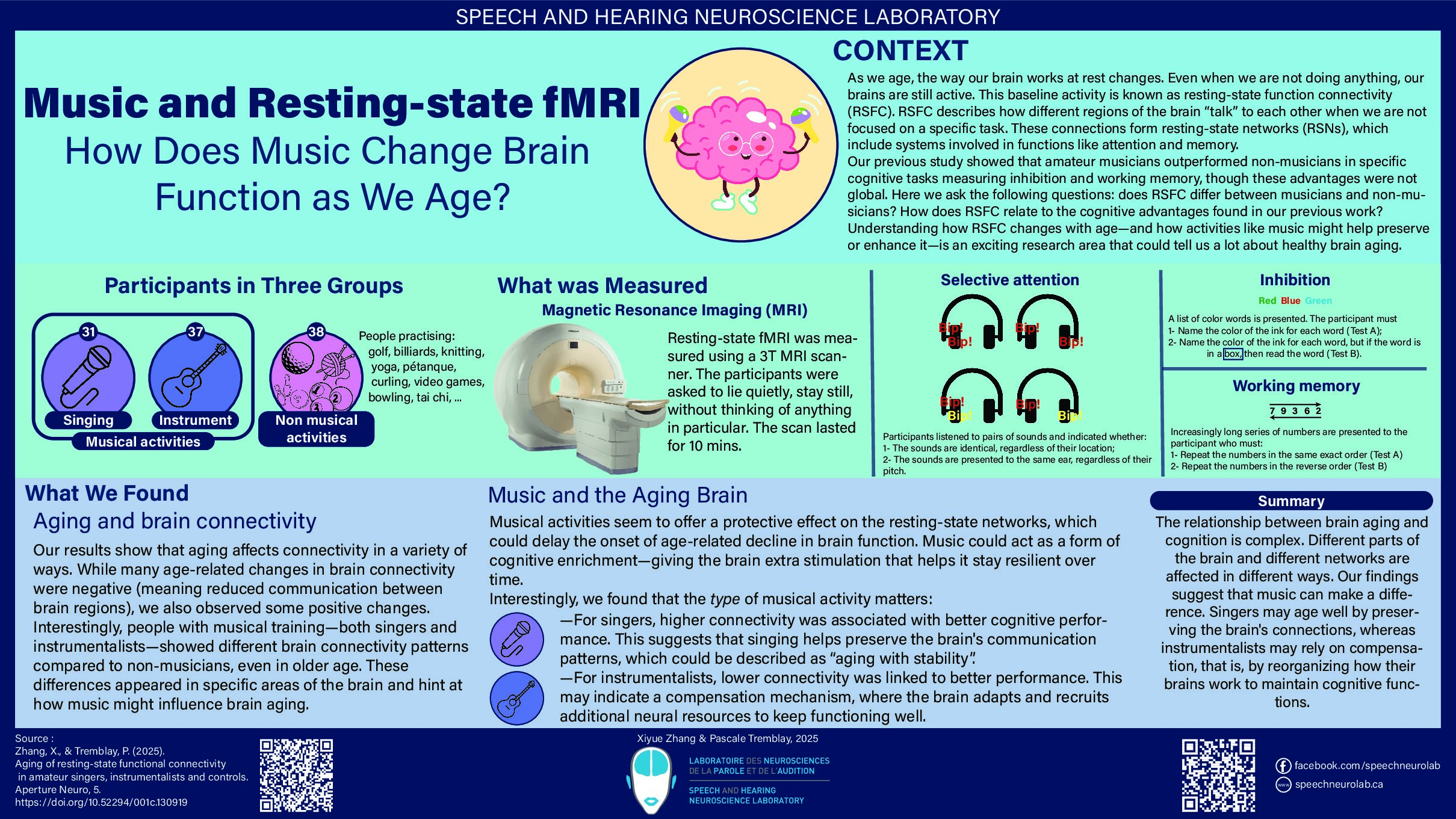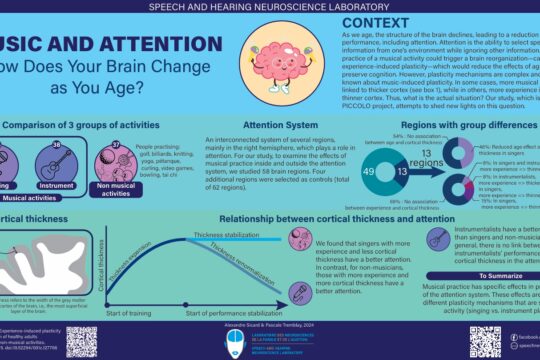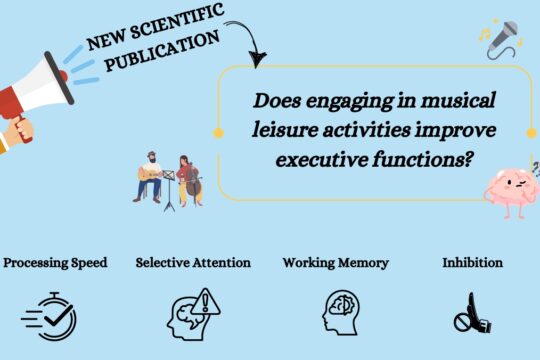In a previous post, we introduced the peripheral auditory system, which receives, and processes all sounds, including speech sounds, from the auricle part of the ear to the cochlea. What happens next?
When the auditory signal is transformed into an electrical signal in the auditory nerve, the resulting signal spreads towards the brain following a complex path. Before reaching the brain, the information coming from the auditory nerve is processed in several nuclei1 of the brainstem (figure 1). Auditory information is first transmitted ipsilaterally to a nucleus called the cochlear nuclei (i.e., sounds picked up by the right ear are first sent to the right cochlear nuclei), and then the signal is split, meaning that it continues its course upwards in both sides of the brainstem, allowing an analysis that combines auditory information from both ears.
1 A nucleus is a collection of neuron cell bodies located in the brainstem or deep within the brain.
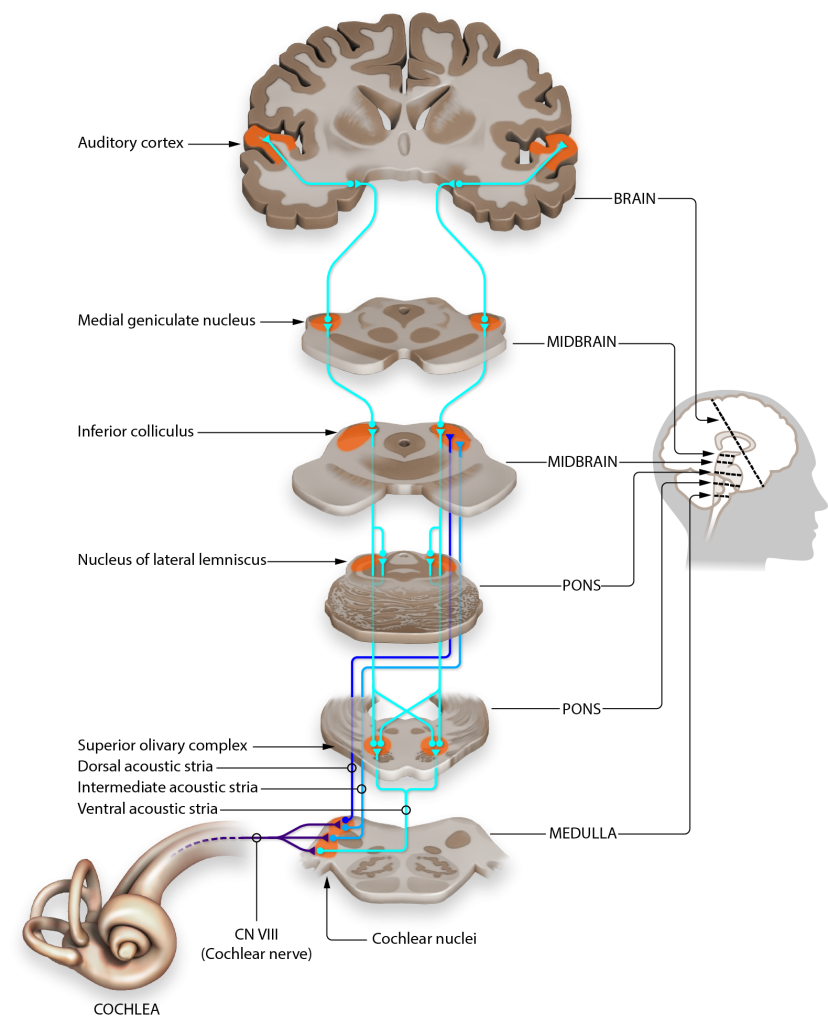
Figure 1. Auditory signal pathway, from Jonathan E. Peelle under license CC BY 4.0. The auditory nerve connects the cochlea to the cochlear nucleus of the ipsilateral hemisphere (i.e., on the same side as the ear). The information is then sent to the superior olivary complex in each hemisphere. The integration of information from each ear begins at this level. Subsequently, auditory information is transmitted bilaterally to the inferior colliculus (i.e., to both the left and right inferior colliculus), then transmitted in the medial geniculate nucleus (in the thalamus), and finally ends up in the primary auditory cortex. Note that other relays allow the transmission of auditory information, for example in the cerebellum, but are not illustrated in this figure.
Researchers have discovered that the signal that travels between the ear and the brain has properties that are similar to those of the original sounds (Figure 2). Specifically, this signal contains information about the basic sound features:
- Sound frequency (low or high pitch)
- Sound duration (short or long)
- Sound intensity (low or high)
- Sound location (vertical and horizontal planes)
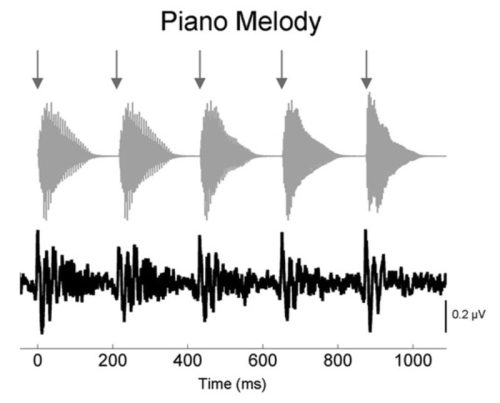
Figure 2. The top of the figure represents the acoustic signal (in gray) produced by a piano. The bottom of the figure represents the electrophysiological response recorded in the brainstem (in black). We observe that the brainstem’s response resembles the acoustic signal. For example, when the intensity of the piano is higher, the auditory brainstem signal also intensifies. The time course of the two signals also appears to be similar.
© Skoe, E., & Kraus, N. (2010). Auditory brain stem response to complex sounds: a tutorial. Ear and hearing, 31(3), 302–324. https://doi.org/10.1097/AUD.0b013e3181cdb272 (figure 2).
However, the closer the signal gets to the brain, the more it becomes complex and thus differs from the original sound. This shows that the various “relays” in the brainstem not only carry information, but also contribute to sound processing. The processing of information related to sound frequency, duration and intensity, initiated in the cochlea, continues in the brainstem. The superior olivary complex and the colliculus, which receive auditory information from both ears, play a key role in the localization of sounds in space. This analysis, which is carried out before the signal reaches the auditory areas of the brain, allows us to orient towards sounds and to react quickly to potential dangers! For instance, jumping when an unexpected noise occurs is a protective reflex against potential dangers. This reaction is generated in the brainstem, while the auditory signal has not yet reached the brain, and the source of the noise is not yet consciously identified.
When the auditory signal reaches the brain, an in-dept signal processing analysis is initiated. In future publications, we will detail how the brain analyzes the acoustic properties of sounds in the primary and secondary auditory areas, and how speech sounds are interpreted (a process that is referred to as “speech perception”).
Other texts in the series:
— The peripheral auditory system (text 1 of 4).
— The auditory cortex (text 3 of 4)
— Speech perception: a complex ability (text 4 of 4).

